FEATURE Mangrove protection official

CAYMAN ISLANDS – Cayman’s mangroves now have official legal protection, which should, finally, prevent these dwindling yet critically important species from being removed by developers without consequence. On Monday, the National Conservation Council gazetted the adoption of a Species Conservation Plan, which formalises mangrove protection in law and outlines the very strict conditions under which they can be removed. Conservationists have warned about the dangers of mangrove clearance for years. More recently, there has been an increase in the number of development sites where a significant swathe of mangroves was cleared before planning permission was obtained. This meant that the Department of Environment was not given the opportunity to advise either against any removal or how it should be done to mitigate negative impact, raising concerns for the scientists at the department. Mangroves provide protection to developments from flooding and coastal erosion and are very difficult to replenish but have, nevertheless, been removed with alarming frequency in recent years. In many cases it appears developers are either unaware or simply do not care about the importance of mangroves or how they would benefit the proposed projects. READ MORE GLOBAL Forest loss are slowing down – but not nearly enough

GLOBAL – The latest snapshot of the world’s forests shows that we are still struggling to meet a fundamental challenge—to make use of our forests while keeping them healthy for the benefit of us all. The 2020 edition of the Global Forest Resources Assessment, compiled with information from countries and territories worldwide, shows that regardless of strengthened efforts to halt deforestation, the world still continues to lose forest cover. The first such survey, released more than seventy years ago by a then-nascent United Nations agency, the Food and Agriculture Organization (FAO), showed there were still sufficient forest resources to provide much-needed timber and but that sustaining the resource would require finding ways to benefit from the land without depleting the natural wealth on which the world would need to depend. Fast-forward to 2020 and the latest forest assessment shows that forest loss is slowing but not enough is being done to conserve and restore forests for the benefit of us all.READ MORE AFRICA Secure land tenure: The legal battles of the Bagyeli

CAMEROON – Indigenous Bagyeli communities in Cameroon are appealing to the United Nations and national courts to save their lands and forests, which are in the process of being given to large agri-business interests by the State. “I can't just sit back and let them snatch up our forests. I am even prepared to go to court to defend our forests,” says Virginie Ngo Houlé firmly. A mother of eight, Virginie is a Bagyeli woman from the village of Gwap. For over 35 years, she has taken care of her family through the gathering, fishing and harvesting activities she carries out in the forests of the Ocean Division in southern Cameroon. Virginie has just picked medicinal plants found in the forest to treat her abscesses. She is suffering from whitlow, an infection localised on the middle finger of both her hands. Despite the severe pain she is in, Virginie is participating in the session to report on the progress of legal proceedings to save the Bagyeli forests from being seized by the company Biopalm. READ MORE AMERICAS Planting trees is no panacea for climate change, says ecologist
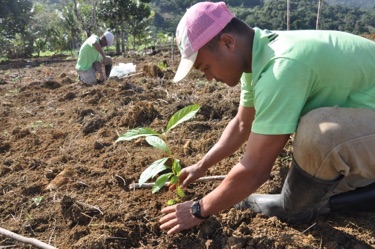
BRAZIL – Restoration ecologist Karen Holl has a simple message for anyone who thinks planting 1 trillion trees will reverse the damage of climate change. "We can't plant our way out of climate change," says Holl, professor of environmental studies at UC Santa Cruz and a leading expert in forest restoration. “It is only one piece of the puzzle.” In a commentary that appears in the May 8 issue of Science, Holl and coauthor Pedro Brancalion, a professor in the Department of Forest Sciences at the University of São Paulo, endorse the benefits of trees but caution against a simplistic view of tree-planting as a panacea for environmental degradation. "Trees are deeply entrenched in the human psyche," said Holl, a restoration ecologist who has prepared hundreds of students for careers in environmental stewardship. "It's very satisfying to go out and put a tree in the ground. It's a concrete, tangible thing to do." READ MORE Mangroves and Manatee Poop

USA – Professor’s “virtual field trips” give students a close-up look at marine life. “Manatee poop is really, really important,” Betsy Stoner says, lying on her stomach on a wooden dock to scoop up a bucketful of brackish water from the Indian River Lagoon National Estuary on Florida’s Atlantic Coast. Reaching in with her bare hands, the Natural and Applied Sciences lecturer picks up a small oval nugget of manatee dung as the camera zooms in for a close-up. Now, her students can see exactly what she sees: Clues to the animal’s digestive health including partially digested seagrass, an intestinal parasite and microplastics, tiny fragments of plastic waste that threaten our marine ecosystems. Microplastics and the environmental havoc they wreak are a focus of Stoner’s Environmental Science and Sustainability and Oceanography courses. In a typical semester, students are treated to immersive lab experiences, dissecting mussels, conducting autopsies on fish and analyzing water samples from plastic bottles as they learn firsthand about the harmful effects of plastic waste on our food chain. The advent of COVID-19, however, upended Stoner's lesson plans so as the university transitioned to online learning, she has embraced an innovative approach to "virtual field trips." READ MORE How to make a mangrove
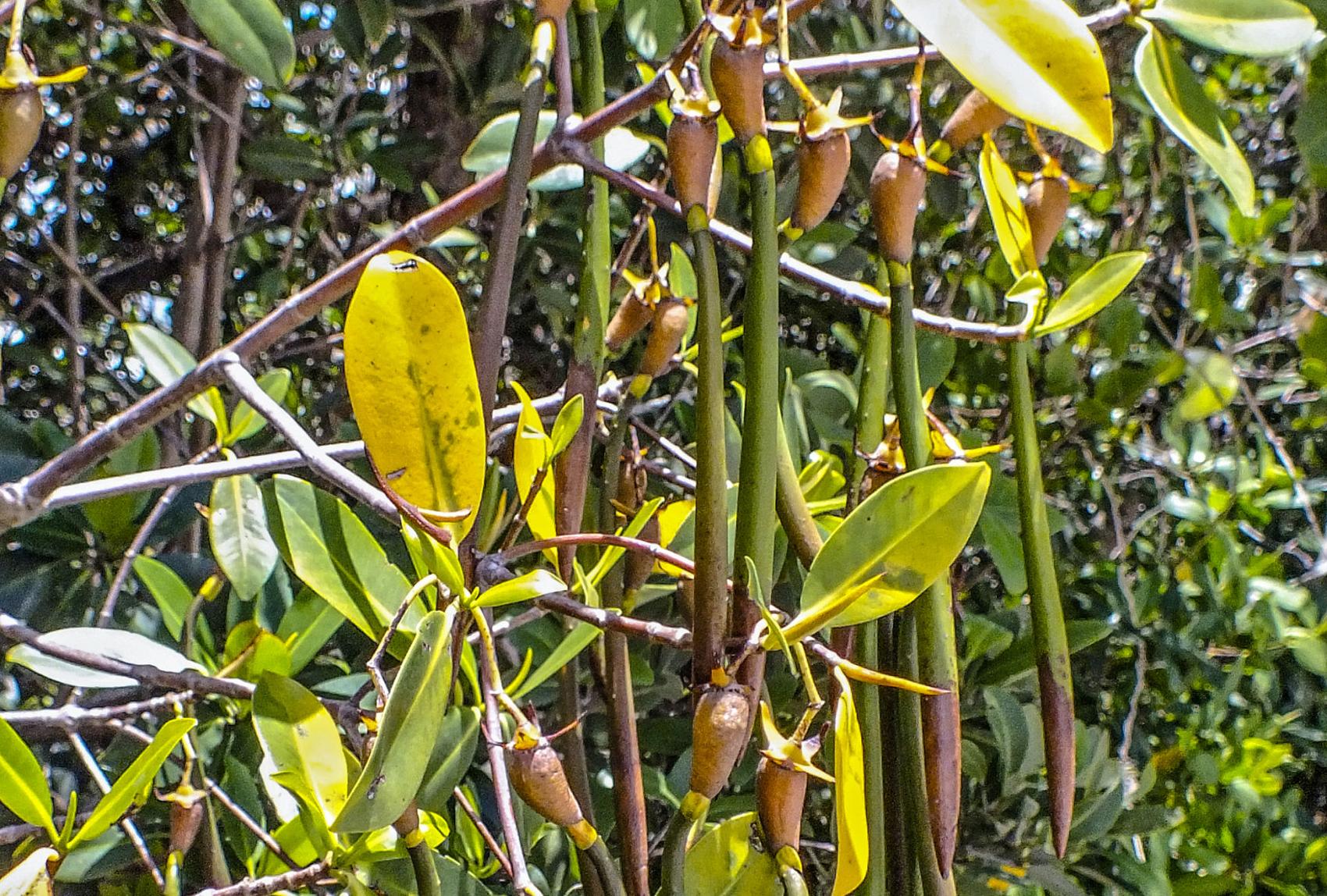
USA – As Robert Lugiewicz alluded to in his column last week, spring is in the air and that means lots of babies are being made. On my last trip out to Charlotte Harbor from my house on Alligator Creek, I couldn’t help but notice all of the red mangrove propagules. Propagules, for those not familiar, are the long seed pods red mangroves produce. They look a bit like string beans hanging from the tree. The other mangrove species produce propagules too, but they’re not nearly as prominent. You might wonder why we call seed pods propagules. Well, we do so because propagules are really more than just seeds. They’re an embryo that has already germinated. Think of it as a pre-sprouted seed. This is one of the many adaptation strategies mangroves rely on to survive in a salty, tidally influenced environment. READ MORE Rising ocean temperatures threaten seagrass meadows and their ability to hold carbon
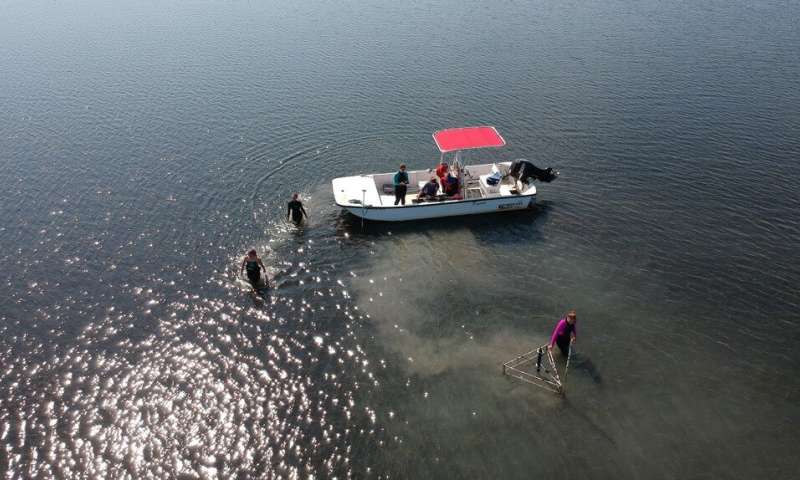
USA – As carbon dioxide emissions continue to increase, scientists have recognized that seagrass meadows are important to mitigation because they have high rates of carbon storage. However, rising ocean temperatures threaten seagrass meadows and their ability to retain carbon. The situation underscores the need for ecosystem data on the vulnerability and resilience of these meadows and on the realistic potential of seagrasses for long-term carbon sequestration. Over an 11-year period, researchers at the National Science Foundation-funded Virginia Coast Reserve Long-Term Ecological Research site used innovative instruments to measure the metabolism of an eelgrass meadow that had been restored in 2001. The results are published in the journal Limnology and Oceanography. READ MORE Florida: endangered sea turtles thriving thanks to Covid-19 restrictions
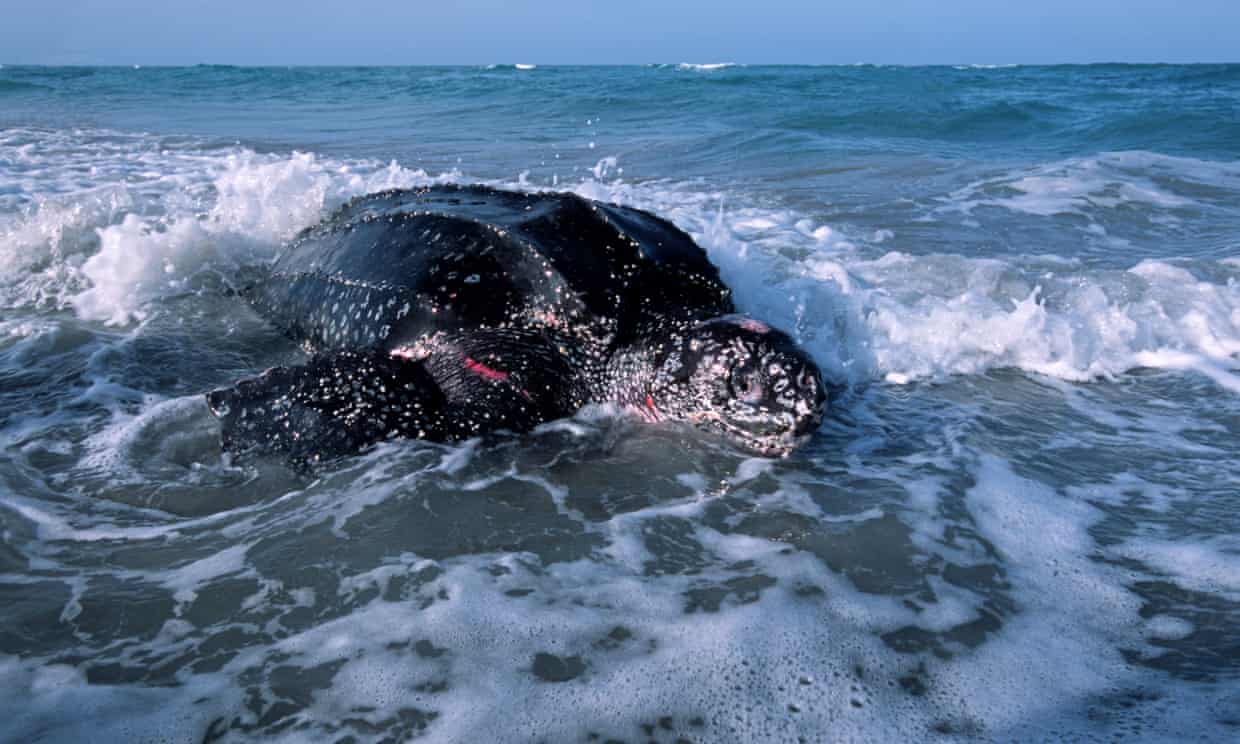
USA – Marine life researchers in Florida say that coronavirus restrictions keeping humans and harmful waste off beaches are having a beneficial effect on the numbers of endangered leatherback sea turtles in the state. With the summer nesting season barely two weeks old, staff from the Loggerhead MarineLife Center in Juno Beach have already found and marked 76 nests of the world’s largest species of sea turtle on the nine and half mile stretch they monitor, a “significant” increase from the same stage last year. The elevated numbers are raising hopes of a bumper nesting season for leatherbacks, and also vulnerable loggerhead turtles that begin to arrive to lay eggs before the end of May. “We’re excited to see our turtles thrive in this environment,” Sarah Hirsch, the center’s senior manager of research and data. READ MORE ASIA Over 150,000 Flamingos besiege Mumbai after city comes to a standstill amid Covid-19 lockdown

INDIA – The Bombay Natural History Society (BNHS) has reportedly ascertained that around 25% more flamingos have migrated to the city when compared to last year. And this is 100% because of a decrease in human activity, according to the Hindustan Times. Every year, flamingos flock to the city which is a part of their migratory patterns. However Deepak Apte, the director of the BNHS, told the Hindustan Times that the lockdown “is giving these birds peace for roosting, no disturbance in their attempt to obtain food and overall encouraging habitat.” He also told the Indian newspaper that the increase is also likely tied to a successful breeding season two years ago, as well as the destruction of wetlands on India’s eastern seafront that could be pushing the birds to the Mumbai region.The Science Times has calculated around 150,000 flamingos have come to the area. READ MORE Experts hail 'golden year' for wildlife

THAILAND – The easing of coral bleaching and absence of tourists due to the Covid-19 pandemic is spurring hopes of restoring years of damage to marine ecosystems, according to Thon Thamrongnawasawat, a well-known marine scientist. In a Facebook post recently, Mr Thon said this could be a "golden year" in the country's efforts to save the undersea environment, which many experts agree has been damaged by excess tourism. Surveys found that during recent years, the corals along the country's extensive coastline have shown signs of severe bleaching. However, this year the problem has substantially improved with only the corals in some areas displaying pale colours, which is a curable early stage of bleaching. "Generally, almost all the corals are looking good with no signs of bleaching," he said. READ MORE The Indus delta is being lost to the sea and we need to do something about it

PAKISTAN – "What you don’t see, you cannot feel." This phrase was used by Tanzeela Qambrani, Pakistan’s first lawmaker of African descent, to encapsulate the plight of the impoverished communities living in the once-flourishing Indus delta. Qambrani, whose Sheedi community is concentrated in the coastal regions of Makran in Balochistan province and Sindh, said the level of poverty is "incredible". Known as the vertebra of Pakistan’s ecology and economy, the Indus delta is the fifth largest in the world and home to the seventh biggest mangrove forest. In recognition of its international importance, the wetland was designated as a Ramsar site in 2002. It forms where the mighty Indus river flows into the Arabian Sea, creating a complex system of swamps, streams and mangrove forests. A triangular piece of fertile land is created when the fast-flowing river deposits rich sediment as it empties into the sea. However, dam construction and mismanagement of water by the government have significantly reduced river flows, causing the delta to shrink, and threatening both human life and its ecology. The absence of flowing freshwater allows seawater into the delta, destroying the soil and the aquifers, making it unfit for humans, animals or crops. READ MORE Shrimp disease outbreak in China ‘not a threat’ to global industry

CHINA – The reported outbreak of decapod iridescent virus 1 (DIV1) in China, known as shrimp hemocyte iridescent virus (SHIV) in shrimp, isn't a threat to the wider global shrimp industry. However, concerns remain over possible more lethal strains, a top industry source told Undercurrent News. On Sunday (April 12), South China Morning Post reported an outbreak of DIV1 in south China has "terrified" shrimp farmers. With reportedly a quarter of pond area in Guangdong province affected, farmers are fretting whether they will face mass deaths of a similar scale to African swine fever, which wiped out as much as 60% of China’s pig herd, according to the article. READ MORE Indian tigers find lockdown grrreat
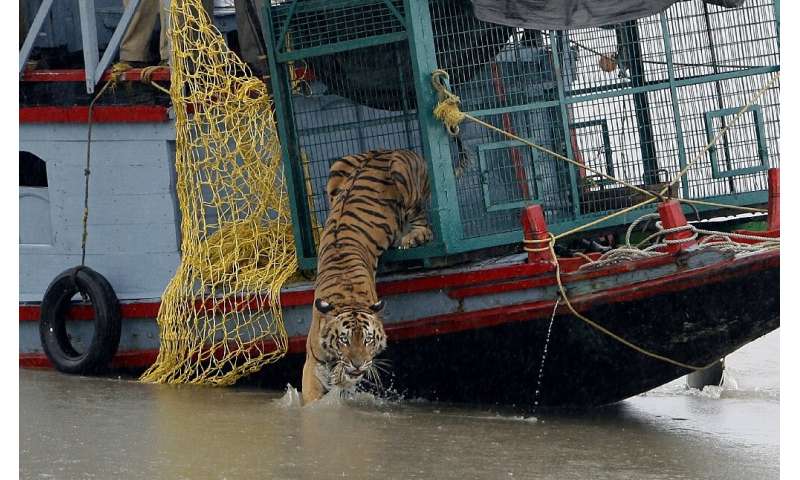
INDIA – With the humans of West Bengal under virus lockdown, tigers in the Sundarbans mangrove forest in the eastern Indian state are coming out to play, with park rangers Thursday reporting a jump in sightings of the big cats. The Sundarbans, straddling West Bengal and neighbouring Bangladesh, is the world's biggest mangrove forest and home to the majestic and endangered Royal Bengal tiger. "Sighting of tigers has gone up… after the lockdown," said Sudhir Das, director of the Sundarbans tiger reserve, referring to the nationwide restrictions in place since late March. In normal times, forest officials catch a glimpse of the big cats no more than twice a week, Das said. But with the lockdown ending tourist traffic and grounding the noisy motorboats and launches that usually ply the region's waterways, they are now sighting tigers "up to six times" a week, he added. READ MORE OCEANA Mangrove seedlings planted along Namoli coastline
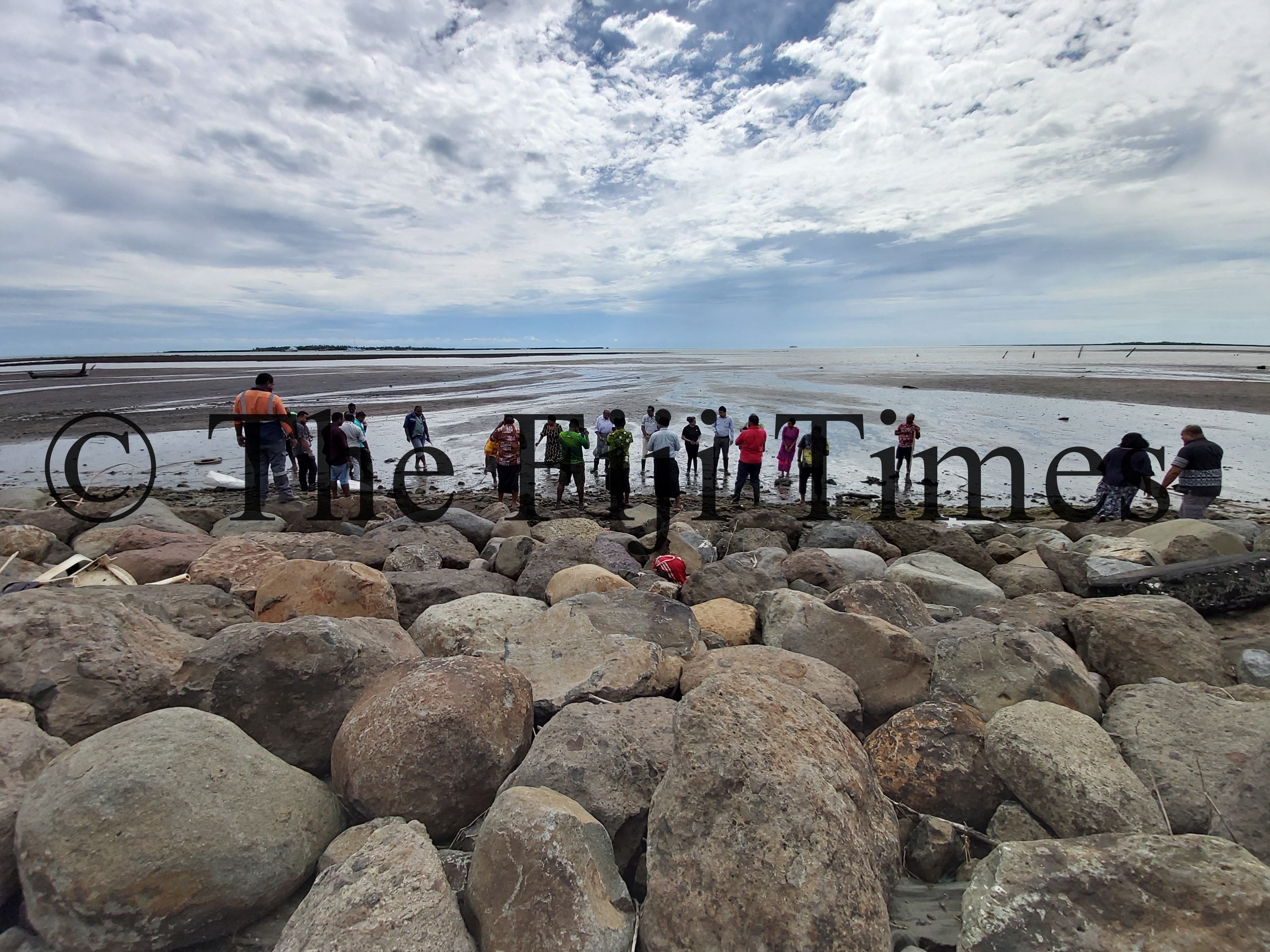
FIJI – Three rows of mangrove seedlings were planted along the coastline of Namoli Village in Lautoka today as part of the Ministry of Waterways and Environment’s grey-green infrastructure project launch. Waterways and Environment permanent secretary Joshua Wycliffe said the mangroves were part of the long term green solution that the ministry would be introducing through the Ridge to Reef program. He said the program highlighted the importance of providing nature-based solutions to protecting the environment. WATCH VIDEO
Like this newsletter?
Pease consider donating to MAP to keep it going.
Giving could never be easier | ACTION ALERTS Enough! Pledging zero tolerance to attacks against environmental and human rights defenders. SIGN THE PETITION PETITION – Save Malaysia's Sea Turtles
A proposed land reclamation project and sand mining in Malaysia threaten a nesting ground of vulnerable Olive Ridley turtles and a marine biodiversity hotspot.. Please SIGN! PETITION – Save Penang! Reject the 3-Islands Reclamation!
The lack of public consultation and detailed information about the project is shocking in view of the size of proposed reclamation which is 4,500 acres or 7 square miles
PLEASE SIGN
PETITION – Save Pulau Kukup National Park – second largest mangrove island in the world. Sign The Petition Like this newsletter? Pease consider donating to MAP to keep it going. Giving could never be easier 
Mangrove Restoration Map VIEW MAP HERE 
Restoring The Natural Mangrove Forest
Watch movie 
Community Based Ecological Mangrove Restoration in Rufiji Delta VIEW VIDEO Video: Mangroves for the Future – A look bacK. As the latest phase of Mangroves for the Future (MFF) draws to a close, this video highlights some of the project’s most successful initiatives – from local women supporting national park management in Viet Nam to an island in the Maldives that has become a model for waste management, and everything in between. View Here WANT TO GET INVOLVED?
Follow and Join MAP!
   
Like this newsletter? Pease consider donating to MAP to keep it going. Giving could never be easier 

VOLUNTEER OPPORTUNITY 
MANGROVE ISSUES Want to learn more about mangroves?
Our short presentation will give you a better understanding of the issues we are working to solve. WATCH PRESENTATION What is CBEMR? Easy to follow fact sheet – CLICK HERE What is EPIC? – The Ecosystems Protecting Infrastructure and Communities (EPIC) project: the role of ecosystems as protective barriers against climate induced hazards MANGROVES APP AVAILABLE
A pictorial field guide for easy identification of various mangrove species and learning about the mangroves ecosystem. CLICK HERE View MAP’s uploaded Videos at MAPmangrover’sChannel
Question Your Shrimp Consumer/Markets Campaign!
WATCH VIDEO WATCH – Mangroves: how they help the ocean
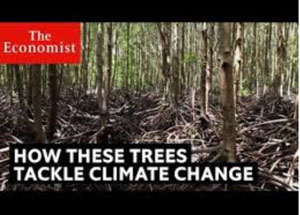 Mangrove Restoration in Asia – Watch Short Video The Value of Mangrove Forests View Video CBEMR Experience Exchange MAP 2017 English Subtitles
VIEW THE VIDEO Mangroves: Guidebook to Malaysia – Click Here
Mangrove rehabilitation in Asia – Local Action and cross-border Transfer of Knowledge for the Conservation of Climate, Forests and Biodiversity VIEW VIDEOS HERE SHARE MAP'S VISION
CLICK HERE to watch short introductory video. Together we can work "at the roots of the sea". Our short documentary, Reducing the Risk of Disaster through Nature-Based Solutions : Mangroves

Exclusive Interview with Alfredo Quarto, Co-Founder and Executive Director of Mangrove Action Project – See more
Marvellous Mangroves Curriculum The Marvellous Mangroves Education Forum is an online hub for those utilizing the Marvellous Mangroves (MM) Curriculum. It gives students, teachers and anyone interested in mangroves, the opportunity to learn and share ideas themed around the curriculum, to connect and communicate with others around the globe whilst exploring mangroves from your computer or on the go. VISIT 
The award-winning Marvellous Mangroves (MM) curriculum educates children on the importance of mangroves and their ecological functions, teaching them about modern challenges and mechanisms for sustainability. VIEW VIDEO Marvellous Mangroves Curriculum in Bangladesh – WATCH VIDEO
MARVELLOUS MANGROVES IN BRAZIL
En Portuges 
Marvellous Mangroves – A Curriculum-Based Teachers Guide. FOR MORE ON MAPs AWARD WINNING CHINA MANGROVE CURRICULUM VISIT

VIMEO SHOW
VISIT OUR "MM" WEBPAGE Check out our presentation for more details on Marvellous Mangroves Read this 10 page history of the development of MAP’s educational curriculum VIEW DOCUMENT
Article in Canada's Green Teacher Magazine – Read More
Like this newsletter? Pease consider donating to MAP to keep it going. Giving could never be easier 
Green Planet Fundraising Assists MAP – LEARN MORE
Volunteer Opportunities with Mangrove Action Project CLICK HERE
"Question Your Shrimp" Campaign Question Your Shrimp- Don't Buy or Sell Imported Tropical Shrimp! Sign the Petition Learn more about the affects of the shrimp industry on mangroves by visiting our blog
Editor’s Note: Mangrove Action Project’s Executive Director, Alfredo Quarto was interviewed about shrimp by Green Acre Radio’s Martha Baskin
LISTEN TO INTERVIEW Sign the Consumer's Pledge to avoid imported shrimp
Not yet a MAP News subscriber?
Click here to subscribe. Note to Our Readers: We strive to keep active links in our newsletter. However, due to circumstances beyond our control, occasionally links to stories may become broken. If you find a link to a story is not functioning, please cut and paste the headline into your browser search bar. In most cases you should be able to locate the original story.
|






























